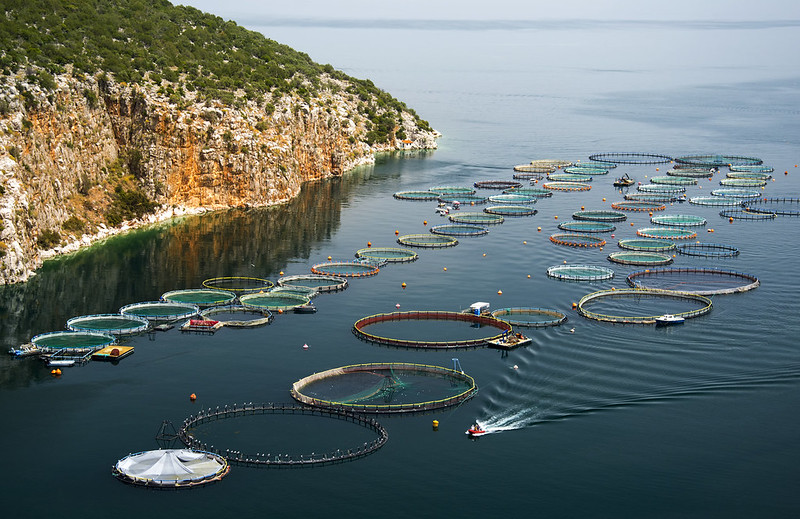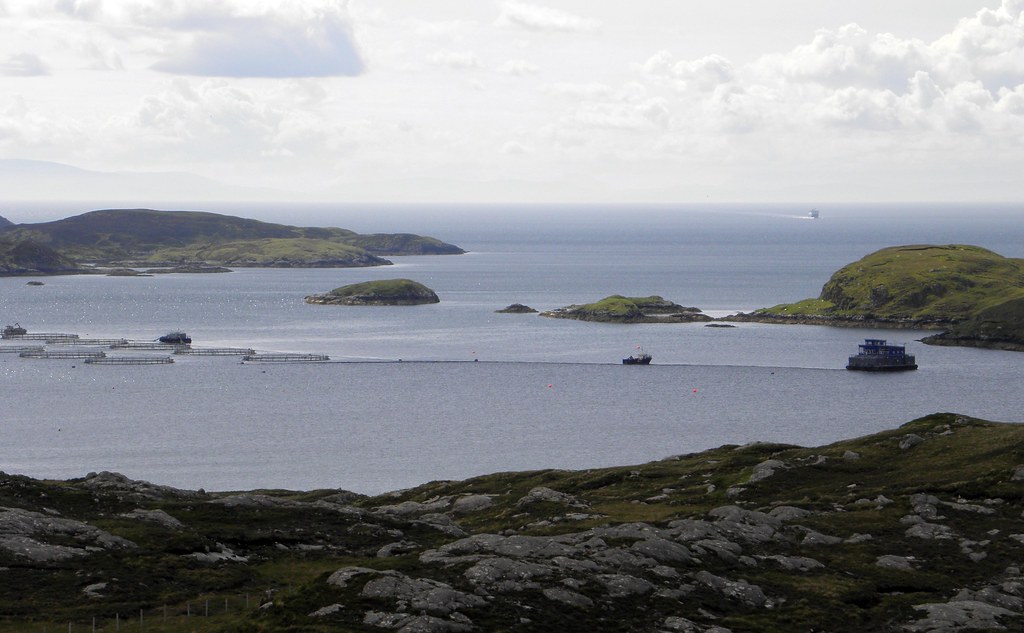Fish farming: the hidden animal welfare disaster happening right under our feet
04 January 2019
The farmed fish industry is at the root of environmental degradation, dwindling wild populations and immense animal suffering.
By Animal Welfare Director Dave Neale
Fish are the most utilised animals on Earth with up to three trillion individuals killed for food every year.
This is an animal capable of feeling pain and experiencing pleasure, while some species have demonstrated long-term memories, complex social structures, problem solving abilities, and an ability to utilise tools.
Despite this, fish receive very little legal protection and are often farmed in terrible conditions or caught using extremely cruel methods.
Fish farming is said to be the fastest growing form of animal food production on the planet, with over half of the fish we consume globally now raised within intensively managed systems which generally take the form of mesh cages submerged in natural bodies of water like sea lochs or rivers.
Yet these farms are now causing major welfare problems for millions of fish as well as causing serious environmental concerns.
Salmon farming is an intensive farming practice. Open-net pens in coastal waters hold tens of thousands of fish in extremely small spaces.
Such intensive conditions makes the salmon more susceptible to disease, while increasing stress, aggression, and physical injuries such as fin damage.
Along with lack of space, overcrowding also leads to poor water quality, leaving the fish with less oxygen to breathe.
The high numbers also make it impossible for individual fish to carry out their key natural behaviours – a recognised minimum standard in animal welfare.
Salmon are migratory animals. They naturally swim great distances at sea before returning to the same river where they themselves spawned in order to lay their eggs.
Yet in a fish farm, none of this is possible. Instead, they swim in endless circles around the cage, rubbing against the mesh and each other.
The open pens allow untreated fish faeces, uneaten food, chemical treatments, and medicines to pass directly into the marine environment, leading to water high in ammonia and low in oxygen.
These high volumes of pollutants threaten the health of the coastal waters and the wildlife that depend upon them.
Salmon farms are also breeding grounds for diseases and pests. The high density of salmon kept in the cages provide ideal conditions for disease and parasites, which cause major animal suffering and lead to high mortality of farmed fish while also posing a risk to wild fish living in the vicinity.
Sea lice feed on the skin and blood of fish, leading to ulceration, reduced growth and sometimes open wounds on the back of the head. These conditions cause major welfare problems for individual fish raised in such a deplorable manner.
Sea lice are estimated to infest nearly half of Scotland’s salmon farms, and the spread of sea lice within the farmed fish and the subsequent spread into the marine environment pose a significant threat to wild sea trout living in nearby coastal waters.
Lice infestations are thus a major factor in the decline of wild salmon and sea trout populations. This has subsequently led to the unmanaged harvesting of wild wrasse for use as cleaner fish to control sea lice numbers on fish farms.
Farms are also often dependent on wild caught fish to feed their farmed fish. It can take up to five pounds of smaller fish to produce one pound of a fish such as a salmon or sea bass equating to over 450 billion fish being caught each year for reduction to fish oil and fishmeal, which is then fed to farmed fish. Overfishing of these smaller fish has repercussions throughout the ocean ecosystem.
Each year, hundreds of thousands of fish escape farms and thus threaten the genetic diversity and survival of native species, which can have serious implications on the health and stability of wild populations.
The farmed fish then spread disease and lice, which prove lethal to the wild fish, depleting their already falling numbers. The number of wild salmon and trout is believed to have been significantly reduced by the introduction of fish farms to Scottish sea lochs, thanks to the lice epidemic in fish farms.
The industry causes further welfare problems by withholding food from farmed fish to empty their guts before stressful procedures, such as transport, grading, and slaughter. Finally, farmed fish are often slaughtered using methods which cause immense suffering, such as gassing with carbon dioxide or cutting the gills without stunning. Some fish are simply left to suffocate in air or on ice, or may be processed while still alive.
In addition to this, as one final morally unjustifiable act, the development of fish farms leads to state supported slaughter of wild animals to protect the farmed fish from predators. Outdoor fish farms are a lure to predatory marine animals, such as seabirds and seals, who are subsequently being poisoned or shot by fish farmers for eating the fish.
Seals and seabirds naturally prey on species such as salmon, and as we have chosen their hunting grounds as an ideal position to place the intensive Scottish salmon farms, conflict is inevitable.
Many hundreds of seals and thousands of birds are being shot each year to minimise the “economic damage” to the salmon farming industry.
Fish cannot speak, or display facial expressions recognised by mammals like us. But make no mistake, these are animals proven by science to be sentient, and intelligent.
With our knowledge of fish cognition growing rapidly through behavioural observations, it is time for us to take a stance on the ever-increasing farmed fish industry and call it out for what it truly is. It is an industry built on animal suffering and environmental degradation hidden beneath the water conveniently out of sight of the public eye.

BACK






